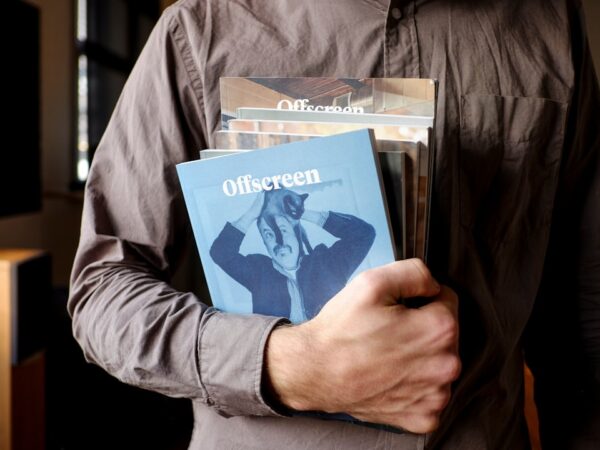
Classic Books to Movies: Timeless Tales on the Big Screen
Classic books have always held a special place in the hearts of readers. These timeless tales have captivated audiences for generations, and their appeal shows no signs of waning. One of the ways in which these beloved stories have been brought to life is through film adaptations. For decades, classic books have been adapted into movies, allowing audiences to see their favorite characters and stories come to life on the big screen.
There is something magical about watching a beloved book being transformed into a movie. It allows readers to see the characters they have grown to love in a whole new light, and it brings the story to life in a way that words on a page simply cannot. The enduring appeal of classic books on film lies in the ability to transport audiences into another world, to experience the story in a visual and auditory way that engages all of their senses.
Key Takeaways
- Classic books turned movies have an enduring appeal that continues to captivate audiences.
- Adapting classic literature to the big screen poses unique challenges for filmmakers.
- The art of casting is crucial in bringing iconic characters to life in movie adaptations.
- Iconic adaptations like “Gone with the Wind” and “To Kill a Mockingbird” have left a lasting impact on pop culture.
- Nostalgia plays a powerful role in why we love watching our favorite books on film.
From Page to Screen: The Challenges of Adapting Classic Literature
Adapting a classic book into a movie is no easy task. One of the biggest challenges is condensing a lengthy book into a two-hour film. Books often contain intricate plots, complex characters, and richly detailed settings, all of which can be difficult to capture in a limited amount of time. Filmmakers must carefully choose which elements to include and which to leave out, all while staying true to the essence of the original story.
Another challenge is striking a balance between staying true to the original story and making necessary changes for the film medium. Filmmakers must make decisions about what to include or omit, what scenes to emphasize or downplay, and how to adapt the story for the visual medium. This can be a delicate balancing act, as they must please both fans of the book who have certain expectations and moviegoers who may not have read the book at all.
Pleasing both fans and non-fans can be a difficult task, as they often have different expectations and desires. Fans of the book may have specific ideas about how the characters should look or how certain scenes should be portrayed, while non-fans may be looking for a compelling story that stands on its own. Filmmakers must find a way to satisfy both groups, which can be a challenging task.
The Art of Casting: Bringing Iconic Characters to Life
One of the most important aspects of adapting a classic book into a movie is finding the right actors to portray the beloved characters. The casting process is crucial, as the actors must not only resemble the characters physically but also capture their essence and bring them to life on screen. The wrong casting choice can make or break a movie adaptation, as fans have high expectations for their favorite characters.
The pressure on actors to live up to fans’ expectations can be immense. They must not only deliver a convincing performance but also embody the character in a way that satisfies fans’ visions of them. This can be a daunting task, as fans often have strong opinions about how their favorite characters should be portrayed. However, when the casting is done right, it can elevate a movie adaptation and make it truly memorable.
There have been many successful casting choices in classic book adaptations over the years. For example, Gregory Peck’s portrayal of Atticus Finch in “To Kill a Mockingbird” is widely regarded as one of the greatest performances in film history. Peck perfectly captured the moral integrity and quiet strength of the character, earning him an Academy Award for Best Actor. Similarly, Vivien Leigh’s portrayal of Scarlett O’Hara in “Gone with the Wind” is considered iconic, and she won an Academy Award for her performance.
Iconic Adaptations: The Most Memorable Classic Books Turned Movies
| Book Title | Author | Movie Title | Director | Box Office Gross |
|---|---|---|---|---|
| To Kill a Mockingbird | Harper Lee | To Kill a Mockingbird | Robert Mulligan | 131.3 million |
| The Great Gatsby | F. Scott Fitzgerald | The Great Gatsby | Baz Luhrmann | 353.6 million |
| Pride and Prejudice | Jane Austen | Pride and Prejudice | Joe Wright | 121.1 million |
| The Lord of the Rings | J.R.R. Tolkien | The Lord of the Rings: The Return of the King | Peter Jackson | 1.12 billion |
| Harry Potter and the Philosopher’s Stone | J.K. Rowling | Harry Potter and the Philosopher’s Stone | Chris Columbus | 974.8 million |
Over the years, there have been many successful and beloved adaptations of classic books. These movies have not only entertained audiences but also left a lasting impact on pop culture. Some of the most memorable and influential adaptations include “Gone with the Wind,” “To Kill a Mockingbird,” and “The Godfather.”
“Gone with the Wind” is a sweeping epic based on Margaret Mitchell’s novel of the same name. Released in 1939, the film tells the story of Scarlett O’Hara, a headstrong Southern belle, during the Civil War and Reconstruction era. The movie was a critical and commercial success, winning eight Academy Awards, including Best Picture. It remains one of the highest-grossing films of all time and has become a cultural touchstone.
“To Kill a Mockingbird” is another classic book adaptation that has had a lasting impact. Based on Harper Lee’s Pulitzer Prize-winning novel, the film tells the story of Atticus Finch, a lawyer in the racially divided South who defends a black man accused of rape. The movie, released in 1962, was praised for its powerful performances and its exploration of themes such as racism and injustice. Gregory Peck’s portrayal of Atticus Finch is widely regarded as one of the greatest performances in film history, and he won an Academy Award for Best Actor.
“The Godfather” is a classic crime drama based on Mario Puzo’s novel of the same name. Directed by Francis Ford Coppola and released in 1972, the film tells the story of the Corleone crime family and their struggles for power. The movie was a critical and commercial success, winning three Academy Awards, including Best Picture. It is widely regarded as one of the greatest films ever made and has had a significant impact on popular culture.
The Power of Nostalgia: Why We Love Watching Our Favorite Books on Film
One of the reasons why classic book adaptations continue to be popular is the power of nostalgia. Many viewers have a deep emotional connection to the stories they grew up with, and seeing them brought to life on screen can evoke a sense of comfort and familiarity. Watching a beloved book adaptation can transport viewers back to their childhood or a time when they first discovered the story, allowing them to relive those memories and emotions.
There is also a sense of comfort in revisiting familiar characters and settings. Seeing beloved characters come to life on screen can feel like reuniting with old friends, and revisiting the settings of a favorite book can evoke a sense of nostalgia and longing. These stories become a part of our personal history, and watching them on film allows us to reconnect with that history.
In addition, there is joy in sharing these stories with new generations. Watching a classic book adaptation with a child or grandchild can be a special bonding experience, as it allows us to pass down our love for these stories and characters to the next generation. It is a way of preserving our cultural heritage and ensuring that these timeless tales continue to be cherished for years to come.
Reimagining the Classics: Modern Retellings of Timeless Tales
In recent years, there has been a trend of modernizing classic stories for contemporary audiences. Filmmakers have been reimagining these timeless tales in new and innovative ways, updating the settings, characters, and themes to reflect the modern world. This trend has resulted in successful adaptations such as “Clueless” and “West Side Story.”
“Clueless” is a modern retelling of Jane Austen’s novel “Emma.” Released in 1995, the film transports Austen’s story of matchmaking and social hierarchy to a high school setting in Beverly Hills. The movie was praised for its clever script, sharp wit, and memorable performances. It became a cult classic and has had a lasting impact on popular culture.
“West Side Story” is another example of a successful modern adaptation. Based on William Shakespeare’s play “Romeo and Juliet,” the film tells the story of two star-crossed lovers from rival gangs in 1950s New York City. Released in 1961, the movie was a critical and commercial success, winning ten Academy Awards, including Best Picture. It is widely regarded as one of the greatest musicals ever made and has had a significant impact on popular culture.
While modern adaptations can be risky, they also offer the potential for new and exciting interpretations of classic stories. By updating the settings and themes, filmmakers can make these stories relevant to contemporary audiences while still capturing the essence of the original work. However, there is always a risk of alienating fans of the original story, who may have certain expectations and desires.
The Impact of Classic Book Adaptations on Pop Culture
Classic book adaptations have had a significant impact on pop culture. They have influenced fashion, music, and other aspects of popular culture, becoming a part of our cultural lexicon. Characters like Scarlett O’Hara and Atticus Finch have become iconic figures, representing certain ideals or archetypes.
For example, Scarlett O’Hara from “Gone with the Wind” is often seen as a symbol of resilience and determination. Her character has inspired countless fashion trends, with her iconic green dress becoming an enduring image in popular culture. Similarly, Atticus Finch from “To Kill a Mockingbird” is seen as a symbol of moral integrity and justice. His character has become synonymous with the fight against racism and injustice.
These movies have also given rise to iconic lines and scenes that have become ingrained in our collective memory. For example, the line “Frankly, my dear, I don’t give a damn” from “Gone with the Wind” is one of the most famous lines in film history. The courtroom scene in “To Kill a Mockingbird,” where Atticus Finch delivers his powerful closing argument, is also widely regarded as one of the most memorable scenes in film.
The Evolution of Classic Book Adaptations: From Black and White to Technicolor
The evolution of technology and filmmaking techniques has had a significant impact on classic book adaptations. In the early days of cinema, movies were often shot in black and white, which added a certain aesthetic and mood to the storytelling. However, with the advent of color film, filmmakers were able to bring a new level of visual richness and depth to their adaptations.
The shift from black and white to color had a profound impact on storytelling. Color allowed filmmakers to capture the vibrant settings and costumes of classic books in a way that black and white film could not. It added a new layer of realism and immersion to the storytelling, allowing audiences to feel like they were truly experiencing the world of the book.
In addition to color, advancements in special effects and CGI have also changed the way classic books are adapted for the screen. Filmmakers now have the ability to create fantastical worlds and creatures that were once only possible in the imagination. This has opened up new possibilities for storytelling and has allowed filmmakers to bring even the most fantastical elements of classic books to life.
The Role of Music in Classic Book Adaptations: Iconic Soundtracks and Scores
Music plays a crucial role in classic book adaptations. It sets the tone, enhances the emotional impact of a scene, and helps to immerse viewers in the story. Iconic soundtracks and scores have become synonymous with certain movies or scenes, adding an extra layer of depth and meaning to the storytelling.
For example, “The Sound of Music” is known for its iconic soundtrack, which includes songs such as “Do-Re-Mi” and “My Favorite Things.” The music not only enhances the emotional impact of the story but also becomes an integral part of the narrative. The songs are used to convey the characters’ emotions, advance the plot, and provide moments of joy and celebration.
Another example is the score for “Jaws,” composed by John Williams. The ominous and suspenseful theme music has become one of the most recognizable and iconic in film history. It is used to build tension and create a sense of impending danger, adding to the overall impact of the movie.
Music has the power to evoke emotions, create atmosphere, and enhance the storytelling in a way that words or visuals alone cannot. It can become a character in its own right, adding depth and richness to the narrative.
The Future of Classic Book Adaptations: What’s Next for Timeless Tales on the Big Screen?
The future of classic book adaptations is bright. As long as there are beloved stories and characters, there will always be a demand for adaptations that bring them to life on the big screen. New adaptations have the potential to introduce these timeless tales to a new generation of viewers, ensuring that they continue to be cherished for years to come.
However, there are challenges in finding new ways to tell familiar stories. Filmmakers must find a balance between staying true to the essence of the original work and bringing something fresh and innovative to the adaptation. They must find new angles, perspectives, or interpretations that will engage audiences and make them see these stories in a new light.
Despite these challenges, there is excitement in seeing beloved characters and stories come to life in new and innovative ways. With advancements in technology and filmmaking techniques, there are endless possibilities for how classic books can be adapted for the screen. Whether it’s through virtual reality, interactive experiences, or other forms of immersive storytelling, the future holds exciting possibilities for classic book adaptations.
FAQs
What are classic books turned into movies?
Classic books turned into movies are literary works that have been adapted into films. These movies are based on popular novels, plays, and other literary works that have stood the test of time.
What are some examples of classic books turned into movies?
Some examples of classic books turned into movies include “To Kill a Mockingbird,” “The Great Gatsby,” “Pride and Prejudice,” “The Lord of the Rings,” “The Hobbit,” “The Chronicles of Narnia,” “The Shawshank Redemption,” and “The Godfather.”
Why are classic books turned into movies?
Classic books are turned into movies because they have a built-in audience and a proven track record of success. These books have already captured the hearts and minds of readers, and filmmakers hope to capitalize on that popularity by bringing the stories to the big screen.
What are the benefits of turning classic books into movies?
The benefits of turning classic books into movies include increased exposure for the original work, the opportunity to introduce the story to a new generation of readers and viewers, and the potential for financial success.
What are the challenges of turning classic books into movies?
The challenges of turning classic books into movies include staying true to the original story while also making it visually appealing and engaging for a modern audience. Filmmakers must also navigate the expectations of fans of the original work, who may have strong opinions about how the story should be adapted.


















